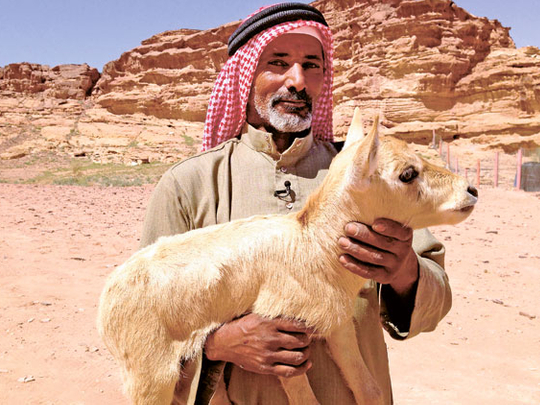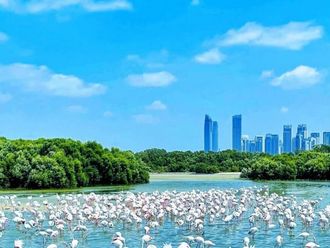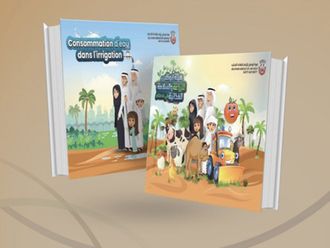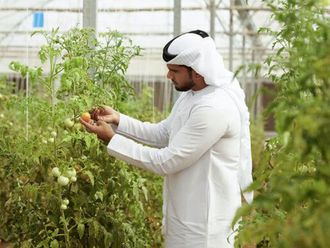
Dubai: The Arabian oryx population in Wadi Rum is flourishing thanks to the donation of eight male and 12 female oryx by the UAE government in 2009. In five years, the breeding programme has resulted in more than doubling this number to more than 73.
The release was part of the initiative of General Shaikh Mohammad Bin Zayed Al Nahyan, Crown Prince of Abu Dhabi and Deputy Supreme Commander of the UAE Armed Forces, to reintroduce the Arabian oryx into its natural habitat in Jordan.
You can catch the story of the oryx reintroduction programme on CNN’s Inside The Middle East to be screened on Wednesday, May 7.
Abdul Rahman Al Hassneinn, the manager of the Wadi Rum Oryx Project who is in charge of microchipping the newborns and reintroducing the animal to the protected area, is overjoyed by the UAE government’s magnanimous gesture.
“For Bedouin the oryx was always a guide to finding grazing areas and water bodies for their animals as these creatures follow the rain pattern in the desert. But the species nearly went extinct more than four decades ago and is still considered vulnerable, hunted for its horns and meat. Their disappearance affected the food chain here. Now, the Wadi Rum project is trying to bring the animal back and we are happy their numbers have risen to 73.”
The oryx, a white antelope believed to be the inspiration for mythical unicorns and a central figure in Bedouin folklore, was an indispensable animal for the people of Wadi Rum.
Situated on Jordan’s border with Saudi Arabia this heritage site is a stunning expanse of windswept valleys and gorges made famous 100 years ago by the visit — and subsequent writings — of British army officer T.E. Lawrence. The Wadi Rum project has helped the animal adapt to the environment and reproduce naturally now.












